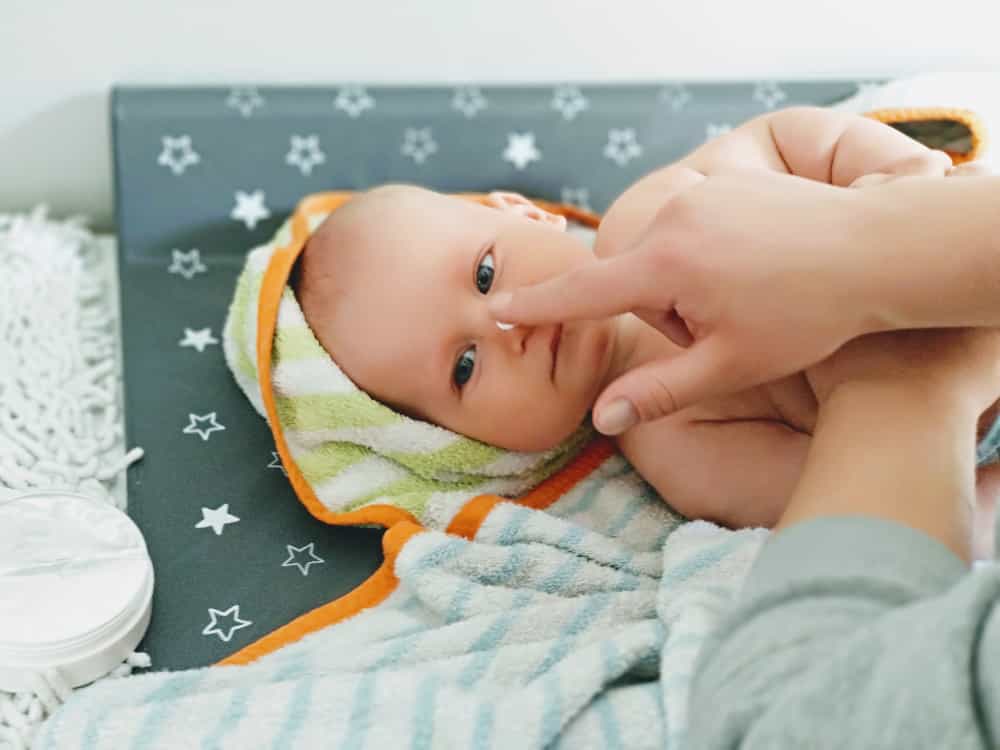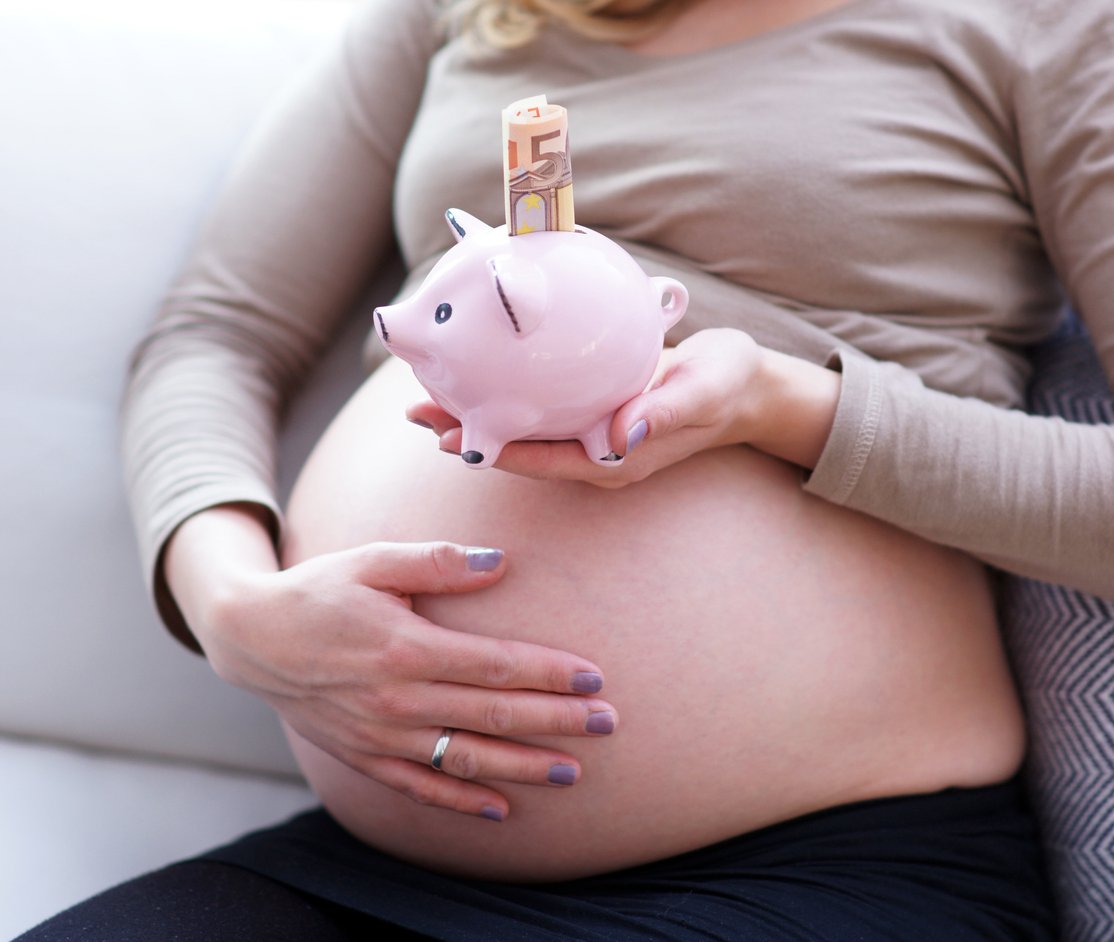Many couples like the idea of having a baby, but they are often hesitant because they fear the additional costs that a child can add to their budget. The fact is that raising a child will cost money. Over the first 18 years of their life, your kids will have different needs, and it will be essential to plan accordingly, so you can give them the best life possible. To help you make an educated decision, we will tell you how much it may cost to have a baby and the various costs and purchases that you can expect during their long childhood.
Key Points
- With insurance, your out of pocket cost for delivering a baby will be about $3,000. If you lack health insurance, this cost will range from $14,000 to $26,000. If you live outside the United States, you will generally not have to pay anything out of pocket.
- The most expensive period of a child's life is ages 2-5, when you can expect to pay about $75,000 total for their care.
- To raise a child from birth to 18, it will cost just under $225,000.
Cost to Have a Baby From Birth to 2 Years Old

©Dominika Wawryniewicz/Shutterstock.com
As you may imagine, you will pay a lot of money during the first 2 years of your baby’s life.
Your child will need to be born, and regardless of if you have the baby in a hospital or at home, it will still cost money.
According to Forbes, just the act of having a baby will cost an average of $18,000. That cost will include the hospital stay, the actual birth, the medications you may require, the time spent in a bed, and more. The cost of the bill will also depend on if you have a vaginal birth or a cesarean. The vaginal birth can cost an average of $14,000, while the C-section can be closer to $26,000.
If you have health insurance, then you can expect that a lot of that will be taken care of, but you will still need to meet your deductible. If you don’t have insurance, then you may need to pay the entire bill. Of course, the cost may differ based on your state and other factors. With insurance, you could pay out-of-pocket about $3,000.
Setting the Child Up At Home
Once you bring your baby home, you will need to set them up so they can sleep, eat, and thrive. You will need to set up the nursery and buy the tools to help your child get around safely. Below is a sample of the items you will need:
| Item | Cost |
|---|---|
| Stroller | $45 – $1300 |
| Infant car seat | $50-$500 |
| Crib | $120-$1000 |
| Crib mattress | $400 |
| Breast pump | $100-$500 |
| High chair | $40-$400 |
| Baby gates | $15-$200 |
| Nursing bra | $75 |
| Bottles | $10-$90 |
| Baby monitor | $20-$400 |
| Mobile | $20-$60 |
| Humidifier | $15-$250 |
| Container for discarded diapers | $20-$80 |
| Baby bath | $20-$40 |
| Pacifier | $3-$15 |
Those are just some of the most important costs that you will face. Even if you just buy those items and you spend the most in each category, you will be looking at about $5,000. Of course, you can look for deals and sales at your favorite stores, and you could pay a lot less. However, you should budget accordingly to consider these costs.
Other Miscellaneous Costs in the First Year
When considering the cost of having a baby, you will also need to think about other miscellaneous costs that will impact your wallet just to give your child the basic necessities of life.
Food
The cost of food will depend on if you breastfeed your baby or give them formula. If you breastfeed your child, not only will they be happier, but you will also save a fortune. Literally, you may only need to buy a nursing bra and a pump, and that can cost about $185.
However, if you decide to give your baby formula, then you can be looking at about $150 per month or $1,800 for the first year.
Diapers
You will need to buy diapers throughout the first year, and you can expect to pay about $900 for the first year alone.
Clothing
You will see that your child will grow like a weed during that first year, and their onesies will only last so long. Your baby will likely go through several sizes during that period, and parents typically spend about $50 per month for an expected total of $600 for the year.
Healthcare and Doctor Visits
You will need to bring your baby to their regular checkups about seven times during the first year, and if you have insurance, then you will likely only pay a few bucks. However, without insurance, you could be looking at an average of $600 for the year.
Child Care and Nannies
If you are unable to stay home with your child during their first year, then you will likely need to pay for a nanny, or you will need to bring your child to a facility for infant care. Statistics over the last couple of years show that it can cost you about $5,000 per year.
Cost of the Child During the Second Year
The second year of your child’s life will be similar to the first. You will still likely be breastfeeding or formula-feeding your baby for at least the first half of this year ($900). Then, you may move on to purchasing solid baby food. If you do, you can expect to pay $100 per month. So, for food, you will be looking at about $1,500.
You can also expect to pay for more clothing in larger sizes ($500), you’ll still need diapers ($500-$900), and you may still need childcare ($5,000).
Total Cost for Age 0-2 Years Old: $39,800
Cost to Have a Baby From Ages 2-5
It is at this point in time when your child will start to need their own personal space and even their own room. If you currently live in a one-bedroom home then you will need to upsize. Typically, the difference between a one and two-bedroom house is up to $200 per month, so you will be looking at an additional $9,600 per year (48,000 for four years) just because you have a baby.
Toddler Day Care
If you are a working parent, then you may need to put your child into toddler daycare. The prices for this service range from state to state (you can see a full list here). However, you can expect an average of $5,000 for the year (20,000 for four years).
Clothing
Your child will continue to grow during years 2-4, and you will need to purchase new clothes, including jackets, underpants, socks, pajamas, and more. Typically, this can cost about $150 for every season ($2,400 for four years).
Food
Your toddler will be growing a lot during these years, and they will start drinking many new drinks and eating many new foods. You’ll need to buy milk, juice, and meals. Overall, you can expect to pay about $50 per month ($2,400 for four years).
Medical Costs
You will need to continue to bring your child to doctor visits and pay for shots and other various medical costs. With insurance, these will typically add up to about $300 per year ($1,200 for four years).
Total Cost for Years 2-5: $74,000
Cost to Have a Baby From Ages 6-10
The good news about when your child turns 6 years old is that they will start going to school, so you can eliminate the pricey daycare costs. However, you will still need to care for their basic needs.
At this age, your child will start to eat bigger meals, so your grocery budget will expand. You can expect to start spending an average of $2,700 per child ($13,000 for five years).
It is at this age that you can expect to drive around a lot more as you bring your kid to school and drive them to activities. With the costs of the vehicle, gas, and wear and tear, you can expect to pay close to $2,000 per year ($10,000 for five years).
Your child will continue to get bigger during this time, and although you will likely need to buy clothes less frequently, it will still be necessary to spend about $700 per year ($3,500 for five years).
Finally, you will need to include your child on your health insurance, and that could add about $1000 per year ($5000 for five years).
Total Cost for Years 6-10: $31,000
Cost to Have a Child Ages 11-16

©fizkes/Shutterstock.com
Your child will grow by leaps and bounds as they get older and eventually get into their teen years. During this time, you can expect to continue to pay $1000 per year ($6000 for six years) for health insurance, $2,700 per year for food ($16,200 for six years), and $700 for clothes on an annual basis ($4,200 for six years).
There may be new costs, including your child’s desire to join sports and activities. According to CNBC, parents can expect to spend up to $1,000 on sports equipment, attire, and travel over the course of a year ($6,000 for six years).
While it is optional, many parents may also decide to buy their kids a car once they turn 16 years old. Of course, there are ways to save money on this expense. For instance, you can buy a used vehicle. In 2023, the average used car can cost close to $25,000. A new car can be twice that.
If you do buy them a car or they start driving in any capacity, then they will also need to be insured. As of 2022, the average cost to insure a teen driver is $6,000 annually ($36,000 for six years). This is due to the fact that they are considered to be more at risk.
Total Cost for Years 11-16: $70,000
Cost to Have a Child Ages 17-18
Your child is growing up fast, and they are almost to the age where they will be a legal adult. Now that they are bigger, you can expect to pay more for food. According to Consumer Affairs, the cost to feed a teenager is about $142 per week or close to $7,000 per year ($14,00 for two years).
Although you already own the car, you will need to continue to keep the vehicle insured, so you will continue to see that annual cost of $6,000 ($12,000 for two years). If your kid drives every day, then you can expect to pay for gas and wear and tear. In 2023, that can cost close to $10,000 per year ($20,000 for two years).
You will also need to continue paying for your teen’s basic needs, including food ($6000 for two years), clothes ($1,400 for two years), and health insurance ($2,000 for two years). If they continue to enjoy their sports programs, then you are also looking at $2,000 for two years.
Total Cost for Years 17-18: $11,400
Cost to Have a Child From Birth to 18 Years of Age – Approximately $226,200
So, that is a breakdown of the costs that you can expect to pay as you raise your child from birth until they turn 18 years of age and technically become adults. It is important to remember that this is basically the minimum that you can expect to spend. There is also a chance that you could take on additional costs.
For instance, if your child has a medical emergency, you decide to enroll them in private school, you go overboard on your grocery shopping costs every month, you buy them expensive gifts on birthdays and holidays, or you spend money in any other way, then the expenses can go through the roof.
On the opposite side of the spectrum, you can also save a lot of money while you raise your kids. By being frugal with your groceries, not buying them a car, keeping them out of sports, and having them wear clothes that have been handed down by their siblings, you can dramatically cut down a lot of these costs.
Is There Any Way to Lower This Cost?
After seeing the total cost of raising a child, you might be wondering if there's any way to cut that cost down. We have a few suggestions:
- Consider hand-made toys. While your child will want some store-bought toys regardless, providing them with hand-made toys can save money. This is especially true early on, when your child will likely be less picky about their toys.
- Consider moving. While this isn't an option for everyone, relocating closer to family can provide options for your child's daycare that won't cost you anything. Alternatively, relocating to a country with universal healthcare will significantly cut down on medical expenses for your child.
- Consider obtaining certain things second-hand. Just because something's second-hand doesn't mean it's worse. A lot of thrift items are in very good condition, and might just need some cleaning up. Thrifting certain items will save you a lot over time.
- Sell any items your child no longer uses. While you likely won't recoup all of the money you spent to buy them initially, you can gain some of it back. This will help reduce the overall cost of raising a child over time.
Conclusion
As you can see, there is a lot that goes into raising a child, and you will spend a fair amount of money along the way. Just remember that you will spend this money over time, so it won’t be as bad as it seems. Just make it a point to enjoy this time, and it will all be worth it in the end.
The image featured at the top of this post is ©iStock.com/cirquedesprit.
